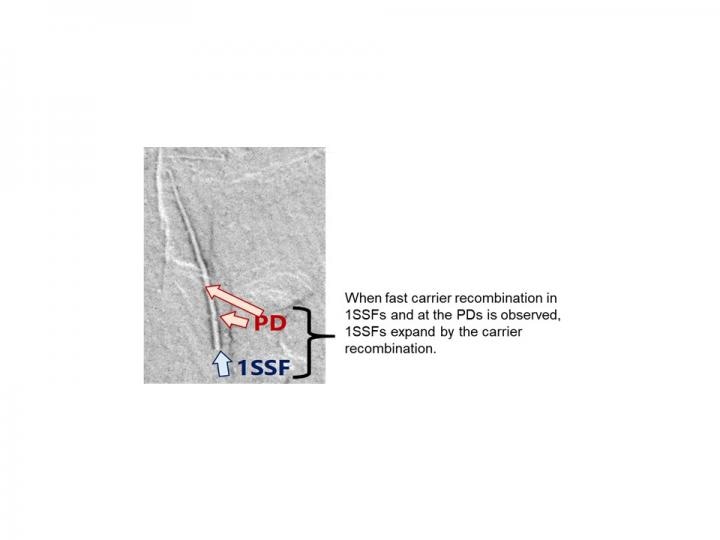Jan 7 2019
New insights have been gathered by researchers at Nagoya Institute of Technology (NITech) and collaborating universities in Japan into the mechanisms causing degradation of a semiconductor material that is used in electronic devices.
 Carrier recombination in single Shockley stacking faults (1SSFs) and at partial dislocations (PDs) was observed, which induced the expansion of 1SSFs. (Credit: NITech)
Carrier recombination in single Shockley stacking faults (1SSFs) and at partial dislocations (PDs) was observed, which induced the expansion of 1SSFs. (Credit: NITech)
By emphasizing the specific science behind how the material degrades, they are paving the way for prospective discoveries that may prevent the material’s performance degradation.
The research was reported in the Journal of Applied Physics in September of 2018. Silicon carbide (SiC) material was used by the researchers for the experiment. SiC is gaining in popularity as an alternative to standard semiconductor materials for electronic devices. The research is based on a particular type of SiC material that is distinctive for its structure, or 4H-SiC. This material was exposed to photoluminescence as well as different temperatures as a means to produce specific kinds of deformations that result in the degradation of SiC-based devices. The researchers were able to witness how these deformations really took place on an atomic level.
We quantified the speed at which electric charge particles move in regions of 4H-SiC material where the atomic structure has been defected. This will usher discoveries of ways to suppress degradation of SiC-based devices such as power electronic systems.
Dr. Masashi Kato, Associate Professor, Frontier Research Institute for Materials Science, NITech.
So as to properly comprehend the actual mechanism behind atomic deformation that caused degradations, the scientists used photoluminescence to prompt movement of electric charge particles and measured the speeds at which that occurred. They examined specific factors that may restrict particle movement as well as the material that was used.
They also analyzed the effects of rising temperature, particularly trying to see if higher temperatures will decrease or increase the rate of deformation.
According to Dr. Kato, the presence of a specific kind of atomic deformation that causes the material to degrade is mainly problematic for SiC-based power devices. "While a particular SiC-based device is in operation, the atoms of the material deform, which leads to degradation. The process by which these atoms deform is not clear yet. What is known, however, is that movement of electric charge within the material as well as areas where the material has become defect already contribute to the aforementioned atomic deformation," he states.
Thus far, similar experiments have been done in the past by other scientists; the results that have been revealed are not consistent. Here, the outcome of experiments with photoluminescence shows that the carrier recombination in single Shockley stacking faults (1SSFs) and at partial dislocations (PDs) is faster compared to regions without 1SSFs in 4H-SiC. Such rapid recombination will trigger the degradation of the device with 1SSFs. Furthermore, 1SSF expansion velocity also increases with temperature rise.
As such, they facilitate research that will revolve around the decelerating of SiC-based devices degradation. This, in turn, could possibly result in superior quality and more sturdy devices.
The researchers state that their future study undertakings will concentrate on discovering ways to prevent SiC-based devices from degrading as well as developing devices that will not weaken over time.